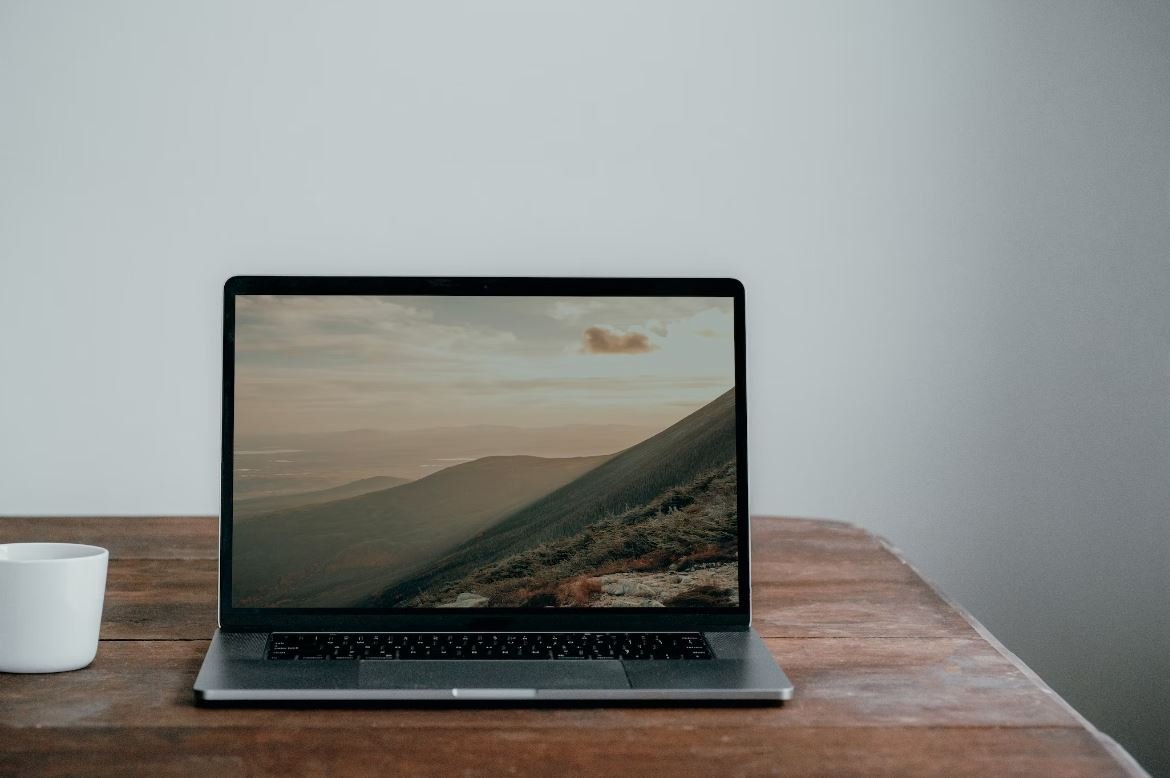Video Playback
As the popularity of online video and streaming services continues to grow, the demand for smooth, high-quality video playback has become increasingly important. Whether you’re watching a movie on Netflix, a tutorial on YouTube, or a live stream on Twitch, a seamless playback experience enhances your viewing pleasure. In this article, we will explore the key factors that affect video playback and discuss best practices for optimizing video playback performance on various devices and platforms.
Key Takeaways:
- Smooth and high-quality video playback is essential for an enjoyable viewing experience.
- Video playback can be affected by various factors, including internet connection, device capabilities, and software optimizations.
- Optimizing video playback involves considerations such as codec selection, video resolution, buffering strategies, and adaptive bitrate streaming.
- Different devices and platforms have their own unique requirements and considerations for optimal video playback.
**Internet Connection**: A stable and fast internet connection is crucial for uninterrupted video playback. When streaming videos, a high-speed internet connection ensures that the video can be quickly downloaded and played without buffering interruptions. *Buffering delays can be frustrating, particularly when watching live events or fast-paced videos.*
**Device Capabilities**: The capabilities of the device on which you are consuming the video also impact playback performance. Modern devices, such as smartphones, tablets, and smart TVs, offer powerful hardware and software optimizations to ensure smooth video playback. *Devices with dedicated video decoding hardware can efficiently decode video files, reducing the load on the CPU.*
**Codec Selection**: Codecs play a crucial role in video compression and decompression. Choosing the right codec is essential for achieving a balance between video quality and file size. Some popular video codecs include H.264, H.265, and VP9. *Newer codecs such as AV1 offer improved video compression, allowing for higher quality video at lower bitrates.*
Optimizing Video Playback
There are several techniques and strategies for optimizing video playback:
- **Video Resolution**: Selecting the appropriate video resolution ensures optimal playback on different devices and screen sizes. Higher resolutions, such as 1080p or 4K, provide better visual quality but require faster internet connections and more processing power.
- **Buffering Strategies**: Implementing an effective buffering strategy helps avoid playback interruptions due to slow internet connections. Buffering involves downloading a portion of the video in advance to ensure a continuous playback experience even in the presence of network fluctuations.
- **Adaptive Bitrate Streaming**: Adaptive bitrate streaming adjusts the quality of the video stream in real-time based on the viewer’s internet connection speed. This technology ensures smooth playback by dynamically adjusting the video bitrate to match the available bandwidth.
*Did you know? Adaptive bitrate streaming is widely used by popular streaming platforms like Netflix and YouTube to optimize video playback on different devices and network conditions.*
Optimizing Video Playback Across Platforms
Each platform and device has its own unique considerations for optimal video playback:
| Platform | Optimization Considerations |
|---|---|
| Desktop Web |
|
| Mobile Web |
|
Tables: Interesting Data Points
| Year | Global Views per Day |
|---|---|
| 2015 | 8 billion |
| 2018 | 17 billion |
| 2021 | 25 billion |
| Platform | Preferred Video Codec |
|---|---|
| YouTube | VP9 |
| Twitch | H.264 |
| Netflix | AV1 |
| Resolution | Bitrate (Mbps) |
|---|---|
| 480p | 1.5 |
| 720p | 3 |
| 1080p | 5 |
Optimizing video playback is vital for delivering a seamless viewing experience to users. By considering factors such as internet connection, device capabilities, codec selection, and platform-specific optimizations, you can ensure smooth and high-quality video playback across various devices and platforms.

Common Misconceptions
1. Video playback requires a high-speed internet connection
One common misconception about video playback is that it can only be enjoyed with a high-speed internet connection. However, this is not entirely true. While a faster internet connection can provide better quality and uninterrupted playback, it is not always necessary. Many streaming platforms now offer the option to download videos for offline viewing, allowing users to watch videos without an internet connection.
- Downloading videos for offline viewing is a popular feature offered by streaming platforms.
- Lower quality settings can help improve video playback on slower internet connections.
- Buffering allows videos to load in advance, reducing interruptions during playback.
2. Video playback quality depends solely on the file resolution
Another misconception is that video playback quality is solely determined by the file resolution. While resolution is a significant factor, it is not the only one. The video codec, bitrate, and compression used also play a crucial role in determining video quality. A higher bitrate and less compression can result in a better quality video, even at lower resolutions.
- Bitrate refers to the amount of data processed per second and affects video quality.
- Compression can impact the sharpness and overall visual fidelity of the video.
- Using the right codec can optimize video playback for specific devices or platforms.
3. Video playback is impossible without dedicated video players
Many people believe that video playback is only possible with dedicated video players like VLC or Windows Media Player. However, modern browsers have become capable of supporting various video formats natively, eliminating the need for additional software installations. HTML5 introduced the <video> element, allowing developers to embed and play videos directly within web pages.
- Modern web browsers, such as Chrome and Firefox, can play videos without additional software.
- The HTML5
<video>element makes it easier to embed videos in web pages. - Browser plugins and extensions can enhance the video playback experience.
4. Video playback quality is solely dependent on the device
It is often assumed that the quality of video playback is solely dependent on the device. While devices do have an impact, there are other factors to consider as well. For instance, the internet connection speed, video resolution, and available software also affect the quality of video playback. Upgrading to the latest device alone may not guarantee the best video playback experience.
- A stable and fast internet connection is crucial for smooth video playback.
- Optimizing video settings and using compatible formats can enhance video playback quality.
- Using video player software with advanced features can improve the viewing experience.
5. Video playback is a resource-intensive task that slows down computers
Some people believe that video playback is a resource-intensive task that can slow down their computers. Although playing high-resolution videos can be demanding, modern computers and mobile devices are typically equipped with powerful processors and dedicated graphics capabilities that can handle video playback efficiently. However, running multiple resource-intensive tasks simultaneously may impact video playback performance.
- Hardware acceleration allows devices to offload video processing to dedicated graphics chips.
- Closing unnecessary applications and browser tabs can free up system resources for smoother video playback.
- Regularly updating video drivers can also help improve the performance of video playback.

The Evolution of Video Playback
Since the advent of digital technology, video playback has come a long way, revolutionizing the way we consume visual content. In this article, we will explore the evolution of video playback and highlight some fascinating facts and milestones along the way.
The Birth of Video Playback
Video playback started with the introduction of the first commercial video cassette recorder in 1956. Let’s take a look at some key details related to this early technology.
| Year | Company | Resolution | Storage Format |
|---|---|---|---|
| 1956 | Ampex | 320×240 pixels | Tape |
| 1975 | Sony | 360×240 pixels | VHS |
| 1982 | JVC | 640×480 pixels | VHS Compact |
Transition to Digital Video
The rapid growth of digital technology led to the introduction of digital video formats, providing better quality and convenience. Here are some significant advancements in video playback during the transition to digital.
| Year | Format | Resolution | Storage Medium |
|---|---|---|---|
| 1993 | MPEG-2 | 720×480 pixels | DVD |
| 1995 | DV | 720×480 pixels | DV Tape |
| 2000 | MPEG-4 | 1280×720 pixels | DivX |
The Rise of High-Definition Video
High-definition (HD) video revolutionized the viewing experience, offering stunning clarity and detail. Here are some key advancements in HD video playback.
| Year | Resolution | Aspect Ratio | Storage Medium |
|---|---|---|---|
| 2003 | 1920×1080 pixels | 16:9 | Blu-ray Disc |
| 2006 | 3840×2160 pixels | 16:9 | Ultra HD Blu-ray |
| 2012 | 7680×4320 pixels | 16:9 | 8K Display |
Streaming Video Revolution
The widespread availability of high-speed internet paved the way for streaming video services, allowing users to access content instantly. Here are some interesting facts related to streaming video.
| Year | Platform | Monthly Subscribers | Most-Watched Show |
|---|---|---|---|
| 2007 | Netflix | 208 million | Stranger Things |
| 2015 | Amazon Prime Video | 200 million | The Marvelous Mrs. Maisel |
| 2008 | Hulu | 41.6 million | The Handmaid’s Tale |
Mobile Video Consumption
The rise of smartphones and mobile devices has significantly contributed to the increase in video consumption on-the-go. Let’s take a look at some interesting statistics regarding mobile video consumption.
| Year | Platform | Time Spent Watching | Popular Content |
|---|---|---|---|
| 2019 | YouTube | 11 minutes per session | Music Videos |
| 2020 | TikTok | 21.5 minutes per day | User-generated Content |
| 2021 | 30% of all mobile time | Stories and Reels |
Virtual Reality (VR) Video
The emergence of virtual reality technology has opened up new possibilities for immersive video experiences. Here are some notable VR video advancements.
| Year | Resolution | Field of View | Headset |
|---|---|---|---|
| 2016 | 3840×2160 pixels | 360° | Oculus Rift |
| 2017 | 5120×1440 pixels | 180° | HTC Vive Pro |
| 2019 | 3840×2160 pixels | 110° | Oculus Quest |
Live Video Streaming
Live video streaming has become increasingly popular, providing real-time interaction and engagement. Let’s explore some fascinating details related to live video streaming.
| Year | Platform | Number of Concurrent Viewers | Notable Event |
|---|---|---|---|
| 2011 | Twitch | 1.1 million | The International (Dota 2 Tournament) |
| 2020 | YouTube Live | 4.5 million | Virtual Concert by Travis Scott |
| 2021 | Facebook Live | 10.2 million | US Presidential Inauguration |
The Future of Video Playback
Video playback has continuously evolved, and exciting developments are on the horizon. Advancements in technology will lead to even more immersive experiences and higher quality. As the demand for video content grows, we can expect further innovations in the way we watch and enjoy videos.
In conclusion, video playback has undergone a remarkable transformation over the years, from the days of bulky video cassette recorders to the seamless streaming platforms and immersive virtual reality experiences we have today. As technology continues to advance, the future of video playback promises exciting new possibilities for how we consume and interact with visual content.
Frequently Asked Questions
Video Playback
Question 1:
What video formats can be played on this platform?
Our platform supports popular video formats such as MP4, MOV, AVI, and WMV.
Question 2:
Can I watch videos offline?
Currently, offline video playback is not available on our platform. You need an active internet connection to watch videos.
Question 3:
How can I improve video playback quality?
To improve video playback quality, you can try the following: 1. Check your internet connection speed. 2. Close any unnecessary background applications. 3. Use a compatible device and browser. 4. Clear browser cache and cookies. 5. Ensure your device meets the recommended system requirements.
Question 4:
Why does the video buffering frequently?
Video buffering can occur due to a slow internet connection, high network traffic, or issues with the video server. You can try pausing the video for a few moments to allow it to buffer, or try watching the video at a lower resolution.
Question 5:
Is there a limit to how many videos I can watch?
There is no specific limit to the number of videos you can watch on our platform. You can enjoy watching videos as long as you have an internet connection and access to our service.
Question 6:
Can I skip advertisements in the videos?
The ability to skip advertisements may vary depending on the specific video and our advertising policies. Some videos may allow you to skip ads after a certain duration while others may not. We strive to provide a smooth viewing experience with minimal interruptions.
Question 7:
How can I control video playback speed?
You can control the video playback speed by using the playback options available on our platform. These options may include speed controls such as 0.5x, 1x, 1.5x, and 2x. Simply select the desired playback speed to adjust it accordingly.
Question 8:
Can I share videos from your platform?
Yes, you can share videos from our platform using the provided sharing options. You may be able to share videos via email, social media, or by generating shareable links. Please remember to respect copyright laws and adhere to our terms of service when sharing content.
Question 9:
How can I report a playback issue or error?
If you encounter any playback issues or errors, please reach out to our customer support team. Provide them with details about the issue, including the video title, error message (if any), and any troubleshooting steps you have already attempted. Our team will work to resolve the issue as quickly as possible.
Question 10:
Can I download the videos for offline viewing?
Downloading videos for offline viewing is currently not supported on our platform. You can only watch videos when you have an active internet connection.




